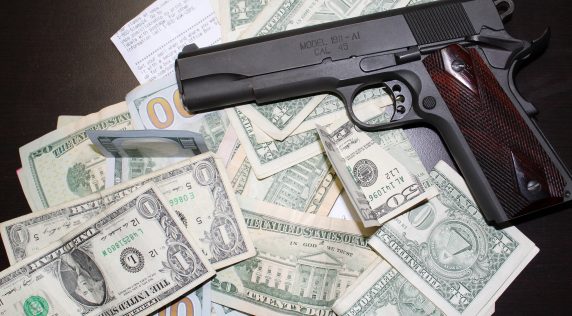
A new report from the Everytown for Gun Safety gun prohibition lobbying group asserts last year’s spike in homicides had two contributing factors, a record number of gun sales and the outbreak of COVID-19, according to CBS News.
But Everytown may have unintentionally affirmed that gun rights groups were right in their predictions at the outset of the coronavirus pandemic about social unrest and the inability of government to protect the public.
“The US government declared a national emergency and states released social distancing guidelines in mid-March 2020,” Everytown’s report says. “Almost immediately after, many Americans purchased guns; they felt they had to protect themselves, partially in response to gun lobby propaganda that social unrest was inevitable and that the government would not protect them.”
But a look back at 2020 confirms there was great social unrest, and in places including Seattle, Portland, Kenosha, Chicago, police agencies were stretched as municipal governments acquiesced to demands for restraints on law enforcement following the killing of George Floyd in Minneapolis. Seattle saw mob rule literally take over in a six-block area of the city that became known as the “CHOP” Zone, where police were kept out for nearly a month, two people were murdered and other crimes were reported.
Maybe social unrest actually was inevitable, especially after the Floyd incident.
In that case, it wasn’t so-called “propaganda” that energized gun sales so much as it was nightly news reports.
Millions of people lost their jobs, schools closed down, businesses closed.
Everytown, according to CBS, wants a national mandate on background checks, “so that gun traffickers and criminals don’t go shopping across state lines.”
Everytown estimates in its report that some 22 million firearms were purchased last year, a 64 percent increase over 2019. This estimate is based on the fact contained in Everytown’s report that “federally licensed gun dealers requested nearly 40 million background checks—40 percent more than during 2019.” All of those gun sales involved background checks, by Everytown’s own admission.
And do some math. According to Everytown’s report, “There were 3,906 additional firearm deaths and 9,278 additional firearm injuries in 2020 compared to 2019.”
The number of additional fatalities is a fraction of one percent of all those additional gun sales.
Everytown, noted CBS, studied five years’ worth of data trends to figure out that one-third of traced guns that crossed state lines during that period were used in crimes. Were all of those firearms purchased during the study period? How long following the retail sale of these traced guns did they show up at crime scenes?
Everytown’s report is interesting, but it appears to raise as many questions as it attempts to answer.